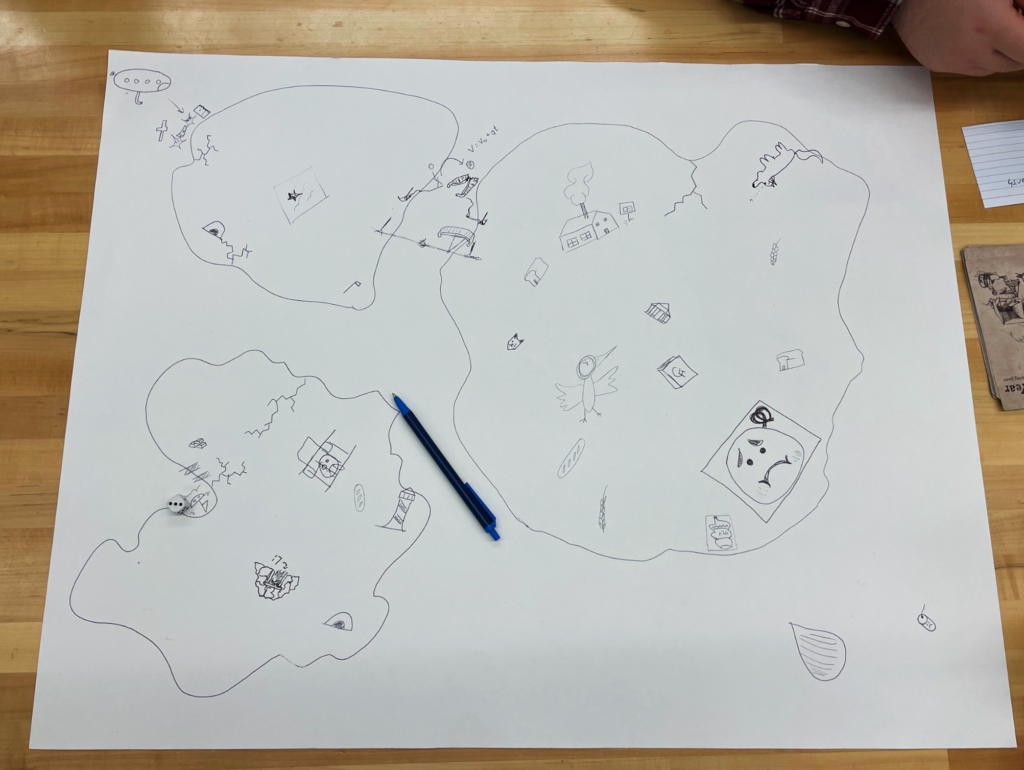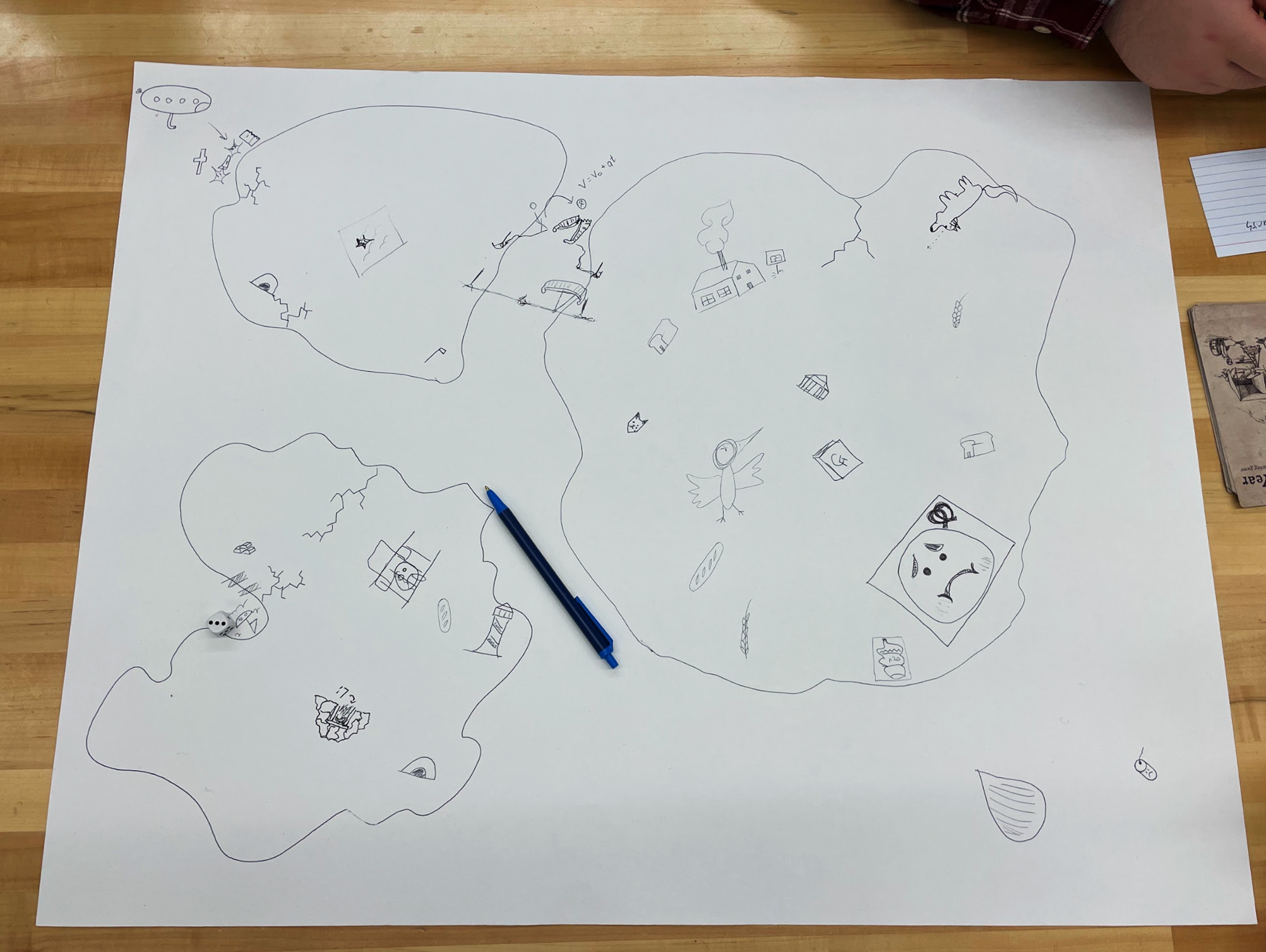Between a young, hip Karl Marx, devout Catholic Starfish, and an oil empire.that puts the USA to shame lies a really strong and compelling foundation (and execution) in The Quiet Year, a Tabletop Role-Playing Game (TTRPG.)
Many TTRPGs feature vast worlds with hundreds of pages of rulebooks filled with lore, classes, items, and monsters. They encourage their players to fully immerse themselves into the world of their characters. As a writer, I love TTRPGs because of that. I want to be drowning in the history of another world. I want to explore what has been written before me and find the intricacies of the system. The Quiet Year doesn’t have that, however, and so I was confused when my group member pulled me over to play a TTRPG when all they had in their hand was a small canvas bag and folded piece of paper.

A common theme within The Quiet Year is taking what you have and working with it. One of the first things you are told before starting is that the Frost Shepherds will come in winter and that is when the game will end. You are told explicitly how the story will end before it even begins. We are then immediately told that we don’t know that. But that ‘we’ is now referring to the characters —or rather representatives of the community— that we inhabit. ‘We’, the players, know time is limited but the game is asking us to forget that and work with the time that we are given. After establishing the ending and discussing a geographical layout, each player decides a resource. This decision helps the players ease into a feeling of bouncing off of each other.
“Yes, and” is a very common phrase/philosophy in improv performance. By recognising your partner as an equal creator, taking their creation, and running with it, you generate more momentum to create a more compelling and engaging show. The Quiet Year stems from that and, although many decisions are not made simultaneously, many decisions are influenced or changed by other players actions. When deciding resources, if one player were to choose bread, I would feel less compelled to choose another food as a resource. And later down the line, everyone is given a turn to have full creative control and it makes sense to run with your group’s ideas instead of trying to counteract them because of the limited amount of time you have.
Playing The Quiet Year generated beautiful improv moments that were both comedic in presentation but also sad in realization. My personal favorite was the slow discovery of the tragedy of the cable ferry that traveled between two of our islands. The Quiet Year facilitates these moments through its mechanics of discussion. Players are only allowed a sentence to convey their thoughts and so they are encouraged to get right to the point. There isn’t room to provide details which allows openings to build off of or misinterpret points. It was this nature of gameplay that inspired our TTRPG, At the Edge of Everything, and really helped me appreciate the ability to work with what is given.
